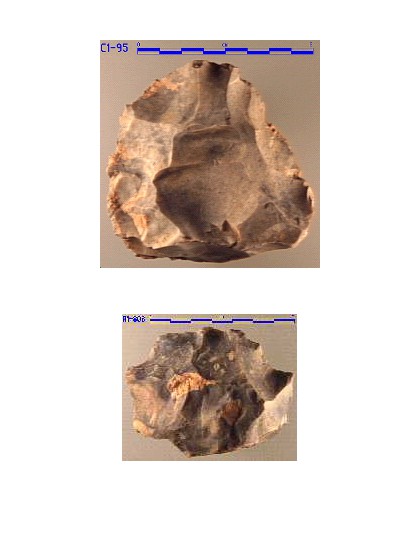Combe-Capelle Bas - Research Design (continued)
The second major reason for undertaking this excavation was because Combe-Capelle Bas is situated directly on a source of abundant and high quality flint.
During the early part of the last decade there had developed a much greater emphasis on raw materials which led to a series of models concerning the relationship between raw material and lithic assemblage variability. These models were applied to the Middle Paleolithic primarily by Rolland and Dibble. They argued that many major aspects of Middle Paleolithic variability that had been identified by Bordes resulted from an increased conservation of raw material when it was scarce (leading to assemblages with more tools in general and with more heavily-reduced scraper types in particular) and more wasteful or less intense utilization of materials when raw material was more plentiful. These same axes of variation corresponded to a large extent with the types of Mousterian industrial variants that had been defined by Bordes. Because of its situation in direct proximity to raw materials, Combe-Capelle Bas represented an excellent test case for these models.
